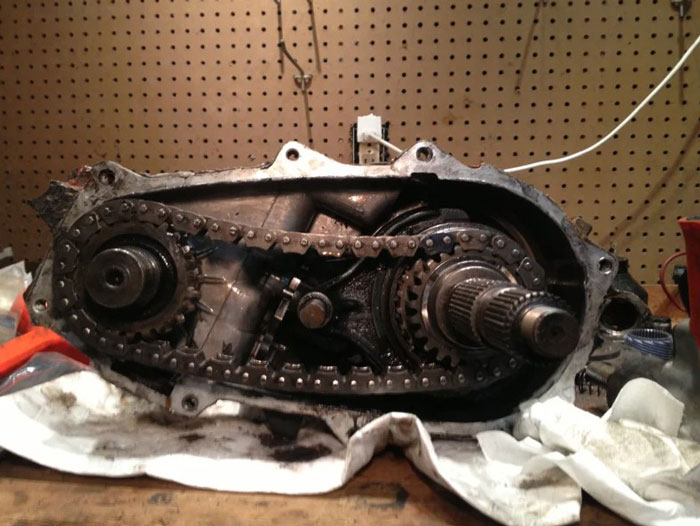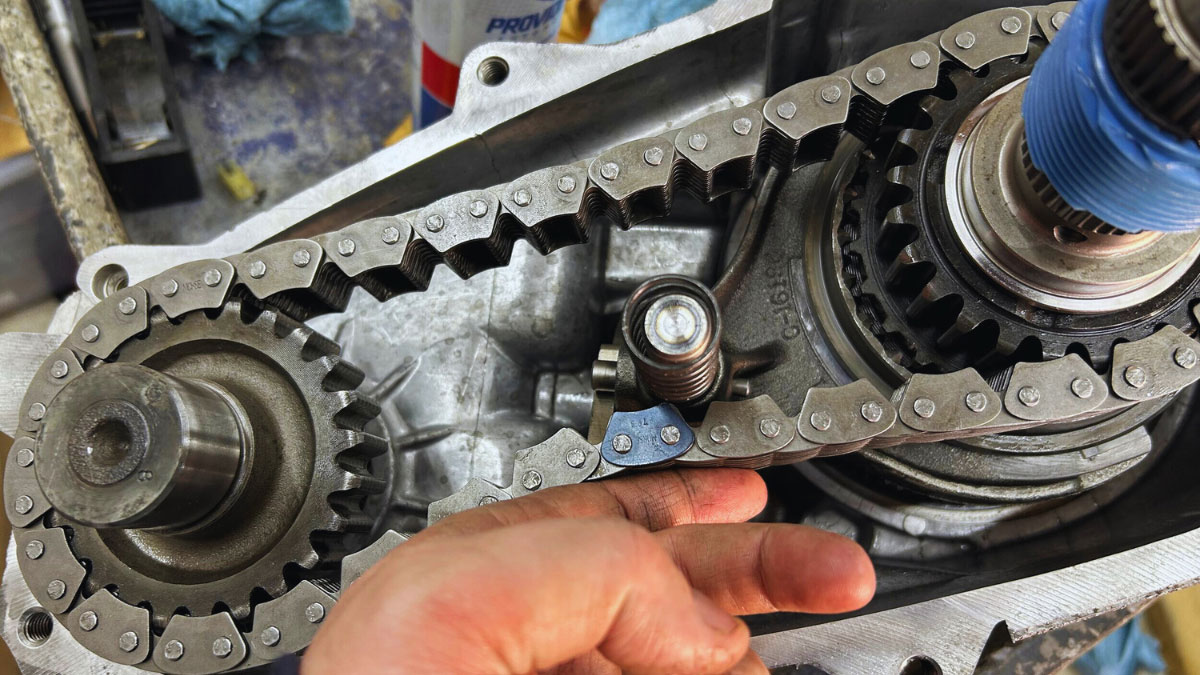If you’ve noticed strange noises or vibrations coming from your vehicle when driving, it could be a sign of a loose transfer case chain. As an experienced blogger in the automotive industry, I’ve encountered various symptoms that indicate potential issues with the transfer case chain. In this article, I’ll delve into the common signs to help you identify if your vehicle’s transfer case chain may be loose.
From odd rattling sounds to difficulty shifting gears, recognizing these symptoms early on can save you from costly repairs down the road. As I share my insights on loose transfer case chain symptoms, you’ll gain a better understanding of what to look out for and how to address these issues promptly. Stay tuned to learn more about diagnosing and resolving problems related to a loose transfer case chain.
Common Symptoms of a Loose Transfer Case Chain

Strange Noises from Under the Vehicle
I’ve encountered that a loose transfer case chain can manifest through strange noises emanating from beneath the vehicle. These noises often resemble rattling or clunking sounds, especially when the vehicle is in motion. Ignoring these sounds may lead to further damage and increased repair costs.
Vibration When Driving
Experiencing vibrations while driving is another prevalent symptom of a loose transfer case chain. These vibrations can be felt through the vehicle’s floor, pedals, or even the steering wheel. If left unaddressed, these vibrations can worsen over time, affecting the overall driving experience and potentially causing more extensive damage.
Issues with Shifting Gears
Another indicator of a loose transfer case chain is difficulty shifting gears. You might notice resistance or grinding when trying to change gears, especially when shifting into four-wheel drive modes. Proper diagnosis and timely repairs are crucial to prevent additional wear on the transfer case components.
Fluid Leakage Near the Transfer Case
Fluid leakage in the vicinity of the transfer case is a red flag for potential issues with the transfer case chain. Low fluid levels can lead to inadequate lubrication, increasing friction and wear on the components. Identifying and repairing leaks promptly can help preserve the transfer case’s functionality and prevent costly repairs in the long run.
Causes of a Loose Transfer Video Case Chain
When a vehicle experiences a loose transfer case chain, several underlying issues may contribute to this problem. Let’s explore the potential causes that can result in a loose transfer case chain.
Worn Out Sprockets
In some cases, worn-out sprockets within the transfer case assembly can lead to a loose transfer case chain. Over time, the continuous friction and stress on the sprockets can cause them to deteriorate, affecting the tension and stability of the chain. This wear and tear on the sprockets can result in abnormal movements of the chain, leading to potential issues with the transfer case system.
Chain Stretching or Damage
Another common cause of a loose transfer case chain is chain stretching or damage. When the chain undergoes prolonged use without adequate maintenance, it can stretch or develop wear and tear. This stretching or damage can impact the overall tension of the chain, causing it to become loose within the transfer case assembly. As a result, the transfer case chain may exhibit symptoms such as rattling noises or uneven operation.
Insufficient Lubrication
Insufficient lubrication within the transfer case can also contribute to a loose transfer case chain. Lubrication plays a vital role in ensuring smooth movement and reducing friction between components. Without proper lubrication, the transfer case chain may experience increased friction and heat, accelerating wear and causing the chain to loosen over time. It is essential to maintain adequate lubrication levels to prevent issues like chain slackness and maintain the overall performance of the transfer case system.
Repairing a Loose Transfer Case Chain
Inspecting Chain Tension and Overall Condition
When tackling a loose transfer case chain issue, the first step is to inspect the chain tension and its overall condition thoroughly. I’d start by checking for any visible signs of wear, stretching, or damage on the chain itself. I’d also assess the tension of the chain to ensure it’s within the manufacturer’s specified limits. Any abnormalities in tension or condition could indicate the need for further action to address the loose chain problem promptly.
Replacing the Chain
If the inspection reveals significant wear, stretching, or damage to the transfer case chain, replacing it may be the most effective solution. In this case, I’d acquire a high-quality replacement chain that meets the manufacturer’s specifications. I’d then carefully follow the recommended procedures to remove the old chain and install the new one correctly. Ensuring proper alignment and tension during the replacement process is crucial to prevent future chain looseness issues.
Lubricant Refill and Maintenance
Proper lubrication is essential for the smooth operation and longevity of a transfer case chain. As part of repairing a loose chain, it’s vital to refill the transfer case with the appropriate lubricant and ensure it’s at the correct level. I’d choose a high-quality lubricant recommended by the vehicle manufacturer to maintain optimal performance. Regularly checking and maintaining the lubricant level will help prevent chain wear, reduce friction, and extend the chain’s lifespan.
Considering a Full Transfer Case Rebuild
In severe cases where the transfer case chain and components have suffered extensive damage due to chain slackness, a full transfer case rebuild may be necessary. During a rebuild, I’d disassemble the transfer case, inspect all components for wear or damage, and replace any faulty parts. This comprehensive approach ensures that the entire transfer case system is restored to its original condition, addressing the root cause of the loose chain issue and preventing future problems.
When to Consult a Professional Mechanic
In complex mechanical systems like the transfer case of a vehicle, certain issues may require the expertise of a professional mechanic. While some maintenance tasks can be handled by car owners, there are specific scenarios where consulting a mechanic is crucial to ensure the problem is addressed effectively. Failure to address certain issues promptly can lead to more significant damage and potentially higher repair costs in the long run.
Here are instances when it’s essential to seek the assistance of a professional mechanic:
- Unusual Noises: If you notice strange noises coming from your vehicle’s transfer case, such as grinding, whining, or clunking sounds, it’s vital to have a mechanic inspect the system. Unusual noises can indicate issues with the transfer case components, including a loose chain, that require expert diagnosis and repair.
- Leakage or Fluid Contamination: The presence of leaks or contamination in the transfer case fluid can be signs of underlying problems. A mechanic can identify the source of the leak, assess the extent of any damage, and recommend the appropriate repairs to prevent further issues.
- Difficulty Shifting Gears: Problems with shifting gears smoothly in your vehicle could point to issues within the transfer case, including a loose chain. A mechanic can perform a detailed inspection to determine the cause of the difficulty and implement the necessary repairs to restore optimal functionality.
- Reduced Performance or Power Loss: If you experience a decrease in overall vehicle performance or notice a loss of power, it could be related to a malfunctioning transfer case chain. Consulting a mechanic can help identify the root cause of the performance issues and take corrective actions to resolve them effectively.
- Visible Damage or Wear: Any visible damage or excessive wear on the transfer case components, including the chain, calls for professional attention. A mechanic can assess the condition of the chain and other parts, recommend repairs or replacements as needed, and ensure the transfer case functions properly.
By recognizing these symptoms and knowing when to involve a professional mechanic, vehicle owners can address transfer case chain issues promptly and prevent further complications. Consulting a mechanic early on can help maintain the integrity of the transfer case system and ensure safe and efficient vehicle operation.
Conclusion
Identifying and addressing loose transfer case chain symptoms promptly is crucial for maintaining a vehicle’s performance and safety. By understanding the signs, causes, and repair options discussed in this article, you can take proactive steps to prevent potential damage and ensure optimal functionality of your transfer case system. Remember, consulting a professional mechanic when encountering unusual noises, leakage, gear shifting issues, performance decline, or visible damage is key to resolving these issues effectively. Stay vigilant, prioritize regular maintenance, and address any concerns promptly to keep your transfer case chain in top condition for a smooth driving experience.
Frequently Asked Questions
What are the signs of a loose transfer case chain?
A loose transfer case chain may cause abnormal noises, difficulty shifting gears, reduced performance, and visible damage in the transfer case components.
What are the common causes of a loose transfer case chain?
Causes of a loose transfer case chain include lack of proper maintenance, wear and tear over time, incorrect installation, or extreme driving conditions.
How can I fix a loose transfer case chain?
Fixing a loose transfer case chain involves inspecting chain tension, potential replacement, lubrication, and the possibility of a full transfer case rebuild.
When should I consult a professional mechanic for a loose transfer case chain?
Consult a professional mechanic when you experience unusual noises, leakage, difficulty shifting gears, reduced performance, or visible damage in the transfer case components. Prompt attention can prevent further damage.

